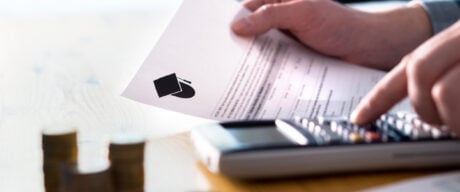A tax refund is issued when you pay more taxes than you owe. But getting a tax refund doesn’t necessarily mean you made a mistake. Sometimes, refunds are the result of claiming credits and deductions on your tax return.
Curious to know why you are (or aren’t) getting a refund this year? Here’s how tax refunds work.
What is a tax refund?
A tax refund is issued when the Canada Revenue Agency (CRA) collects more income tax than you owe based on your income and other financial circumstances. Some examples of why this might occur:
- Your employer deducted more than they should have from your paycheques.
- You overpaid when making your quarterly tax payments as a self-employed individual.
- You failed to claim a tax deduction or credit that you were eligible for.
- You qualify for refundable tax credits.
Nerdy Tip: You can use “Change my Return” in CRA My Account to request a review of past tax returns as far back as ten years. Doing so may result in a tax refund if you’ve realized you failed to claim deductions or credits.
Who receives a tax refund?
Anyone who paid more in taxes than they owe may be eligible to receive a tax refund. If your employer deducted more than they should have from your paycheques or you overpaid when making your quarterly installment payments as a self-employed individual, you will get money back.
When to expect your refund
As long as you filed your return by the deadline, the CRA aims to send you your refund within two weeks if you filed online or up to eight weeks if you filed a paper tax return. However, it can take as long as 16 weeks to receive your refund if you live outside the country.
You can receive a tax refund as a paper cheque, but the CRA notes that the fastest way to get your refund is by signing up for direct deposit.
You can check the status of your refund by either phoning the CRA or accessing your CRA My Account online.
How to calculate your tax refund
When you fill out your tax return, the final step is to subtract your total credits (line 48200) from your total payable amount (line 43500).
- If the resulting number is negative, enter it on line 48400 of your return and you will get a tax refund in that amount.
- If the number is positive, you have a balance owing that you must pay by the deadline and will instead enter the amount on line 48500.
Note: If you’re using tax preparation software, it will handle the calculations for you.
Factors that affect your tax refund amount
You only get a refund if you paid more tax than you should have based on your income and other financial circumstances. That could happen for a few reasons, such as:
- Your employer withheld more tax than was necessary
- You had more than one job and accidentally had both employers withhold the basic personal amount
- You paid more than necessary in quarterly installments on self-employment income
Any allowable tax deductions or credits that you claim can also affect the size of your refund. Deductions reduce your taxable income and include RRSP contributions or child care expenses. Tax credits can apply for tuition fees or charitable donations, and some are refundable — meaning you can receive them as a tax refund.
An additional factor that would affect the amount you are refunded is whether the CRA adds interest to the amount you overpaid, which may occur in some situations. Compound daily interest will be calculated starting on the latest of the following dates:
- The date of the overpayment
- May 30
- The 30th day after you file your return.
Be aware that, even if you are due a refund for this tax year, the CRA may keep a chunk of it if you owe taxes from a previous year, owe GST or HST on self-employment earnings, or have any outstanding government debts like student loans. Additionally, if you are owed $2 or less, the CRA will not process the refund.
What should you do with your tax refund?
What you do with your refund is up to you.
It can be very tempting to see it as a windfall and go on a shopping spree. A far wiser (if less entertaining) use for a tax refund would be to use it to pay down some debt, start an emergency fund or invest it in a TFSA or RRSP.
You can also ask your employer to adjust the amount of income tax they deduct so you receive more of your money on each paycheque instead of getting a big tax refund.
If you are self-employed and pay taxes in quarterly installments, you can use your refund to make your payments more manageable. You can do this by electing to have the CRA transfer your refund to the amount owing on your next future installment payment.
DIVE EVEN DEEPER

What are Canada’s Tax Brackets?
Tax brackets exist at both the federal and provincial or territorial level in Canada. Your income determines your tax bracket, and ultimately, the tax rate you’ll pay.

5 Tax Write-Offs Every Small Business Owner Should Know About
Run your own business? These deductions can significantly lower your tax bill.

Capital Gains Tax: How It Works in Canada
When you sell an investment in Canada, 50% of your gain is considered taxable and will be taxed at your marginal tax rate, based on your income.

Tuition Tax Credit: Who’s Eligible and How to Claim It
The tuition tax credit helps to reduce the income tax bill of eligible post-secondary students in Canada.

